Seems like I ought to do something religious today, so I picked a battle from the the ultimate military expression of religious devotion: The Thirty Years War (1618-1648), Europe’s way of debating the Catholic vs. Protestant thing by counting corpses.
And since I’ve had a few requests to sing the glories of the Swedish Empire, such as it was, I picked the first great Swedish victory: Breitenfeld, September 17, 1631.
Breitenfeld apparently isn’t much now, a suburb of Leipzig in what used to be East Germany. They’ve even run an autobahn across the battle site, thought I guess in a cramped country like what’s left of Germany, you can’t exempt battle sites or you couldn’t build a driveway without zigzags. But for a few hours, about four centuries back, Breitenfeld was the center of the world.
First we have to set the scene a little, which is where religion comes in. Comes in with cannons blazing and civilians massacred, as usual. If you’re looking for a testimonial to the power of faith for your next sermon, preacher, stop right here. Those primitive bucketheads, using nothing more advanced than cannon that were like big rock-throwers, managed to do a job on Germany it took centuries to overcome (at which time the Germans did it to themselves all over again, for free). Faith can move mountains, we all know that, but did you know that faith also managed to exterminate three-fourths of the population in some German provinces, like Baden-Wurttemberg?
You can’t get a death rate like that without divine help.
The Thirty Years War disembowelled Germany, which covered most of Central Europe in the 17th century. I came across some German poem, surprisingly good for a poem, about the war, something like, “For three years running the river has been dammed with corpses.” (Anybody know that poem? I’d like to quote it properly but I can’t find it.)
30 Years War: Strange Fruit, Euro-Style
Most of the dead weren’t killed in battle. They died when the army their local princeling had put his bets down on lost. The soldiers on the losing side could flee—and they did, usually, with no delay at all, since they were mostly foreigners. But the villagers couldn’t flee or they’d starve—no Oxfam for those peasant refugees. They had to stay while mercenary scum, just utter scum, sadistic at a level that would make Liberia look like a Quaker Teachers’ College, poured into the farmlands and had themselves a good time in the name of whichever god and/or king they were paid by. Rape went without saying. Murder, standard practice. Famine, plague—guaranteed, once these filthy bastards swarmed through.
After a while the soldiers got bored with ordinary killing and started using their imaginations. Sometimes just to pass the time, sometimes to get the peasants to tell where they’d buried their grain or bacon. One of the new tortures that was a favorite of the scum who followed the Swedish army around during its victory march through southern Germany from 1630-35 gave a new word to the German language: “Schwedentrunk,” “Swedish drink,” the direct ancestor of the American-made “waterboarding.” Except waterboarding isn’t torture, at least not til Christopher Hitchens tries it, but if it was torture, it’d be the same torture as the Swedish Drink.
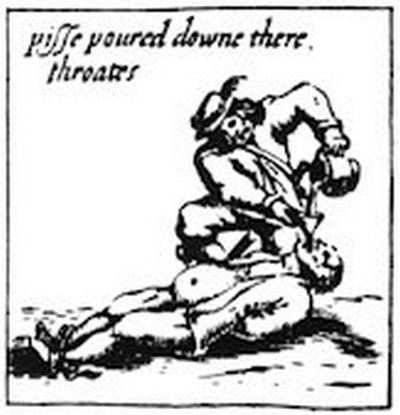
When the Swedish camp followers would catch a German peasant and suspect that he was holding out on them—or if they were just bored—they’d tie the poor misfortunate bastard to a table and mix up a cocktail of ditch water, shit and piss. Then they’d put a funnel in his mouth and pour the stinking mess down him til his belly swole up and he passed out. Then they’d hit his gut with sticks or just kick him while he rolled around trying to scream. You just don’t get Lutherans like that these days. Or Catholics like the ones who took the German Protestant city of Magdeburg on May 20, 1631, killing 25,000 out of 30,000 citizens in one day—again, not bad for the level of technology they had at the time.
The Catholic commander that day, Papenheim, was so proud he just had to boast:
“I consider it cost the city more than 20,000 souls, and most certainly no greater horrors and divine justice have been seen since the Destruction of Jerusalem. All our soldiers have become rich men.”
See? Stuff like this is why I have to laugh when Dixie whiners complain about Sherman. If only they knew what the real rough stuff is like, they’d have his picture in a little shrine as Kwan-Yin Sherman, God of Mercy.
To see what real harsh treatment of civilians means, check Papenheim’s cold-blooded segue to that last sentence, “All our soldiers have become rich men.” All part of God’s plan, and in case you didn’t know, God is a Cat’lic and goes to Mass, not Church.
Gustavus praying after Breitenfeld: Looka them killers on their knees!
In fact (here’s a smooth little segue of my own; Papenheim’ s not the only smooth writer type around here), it was the total horror of Magdeburg that helped the Swedish king Gustavus Adolphus win at the battle of Breitenfeld. Relieving the siege of Magdeburg was the official reason Gustavus Adolphus had landed his army in Germany, but they arrived too late. It may have worked out better that way for the Swedes, though not for the poor ol’ Magdeburg-ites, because when the surviving German Protestants heard what had happened when the Catholic soldiers-of-God slaughtered and raped their way into Magdeburg, they finally realized they’d have to fight back. And when those same Imperial armies—meaning a hard core of mercenaries followed by all the two-legged plague-bearing rats in Europe—swarmed over Saxony, one of the few parts of Germany that hadn’t been destroyed yet, the Elector of Saxony, John George I, put his 10,000 men together with Gustavus’s 25,000 Swedes and 7000-odd assorted Germans.
The Imperial Army under Tilly (Wallenstein had been thanked and shoved offstage because he was getting too popular for the Emperor’s liking) had about 35,000, so the difference wasn’t much. Especially because the Saxon troops turned out to be totally worthless, breaking and running as soon as the battle started.
The Swedes were something else, something weird. Well, Swedes are weird anyway, but Swedish weirdness hit a glorious peak in the 17th century, when the Swedish “zombie” troops marched across Germany and the Baltics. That’s how opposing troops thought of them, “zombies,” because they didn’t flinch under musket fire, didn’t show any expression at all. Like I said: Typical Swedes. Until they appeared, the class of European armies was the Spanish infantry. Most European armies would just drop their weapons and flee when they heard Spanish infantry was the opposition. The Spanish fought in a sort of modern phalanx, the Tercio (“Thirds”), with a mix of three types of arms to deal with any combination of cavalry or infantry attack: Swordsmen to hack through massed pike formations, pikemen to fend off cavalry, and musketmen to deliver shock volleys to charging cavalry and opposing infantry.
At the time of the Battle of Breitenfeld, the tercio was still considered the last word in infantry formations. It was a big, slow, but unstoppable hunk of steel that was sometimes called “The Spanish Square,” meant to have 3000 men but usually advancing with about half that. European armies before the French Revolution were so loose about recruiting and desertion that every formation, including the tercio, had to have noncoms forming a line across the rear to whack deserters back into the line. Not the Swedes, though. They just scowled their way forward, just as happy to get it over with. Maybe they knew their descendants would have to watch Ingmar Bergman movies like the one they made us watch in Social Studies, which—and I swear to God I’m not making this up—consisted of about three hours of this woman dying of cancer and screaming every now and then, and in between the screaming fits just lying there in bed with this clock tick-tocking at about 200 decibels. Maybe Gustav’s pikemen could see that coming and were hoping for a musket ball in the forehead. At any rate, they freaked other European soldiers right out. The Spanish would charge you too, but they’d do it sweating and calling you a heretic hijo de puta, showing a little team spirit. Not the Swedes; mope, hack, sulk, hack, frown, hack, that was them. Creeped people right out.
They had a couple of other things going for them in this battle, things the Imperial forces weren’t expecting. First, the Swedes had been fighting on the Eastern Front against Polish/Lithuanian cavalry, some of the best around, and they’d perfected combined-arms tactics on the Polish plains. Second, they were organized in battalions of about 600 men instead of Tercios three times or four times that size. And they were more heavily armed than the infantry in the Imperial tercios, because one of the combined-arms lessons learned Gustav brought back from Poland was that if you used these new, light (relatively light) artillery pieces, you could wheel them along right with the infantry in the battalions, and when you stacked your musketeers four or five deep and added the firepower of cannon firing homemade grapeshot, you could stop any cavalry charge or infantry advance dead in its tracks. And the small size of the battalion, compared to the Tercio, made for a thinner, longer line, with more guns sprouting from it. Dangerous when edged weapons and cavalry ruled the battlefield but a good idea as firepower improved for the infantry.
17th-c. field piece: Long-barrelled Claymore
Gustavus was a true pioneer in the use of field artillery, mobile artillery. The guns he used look ridiculous; some were so crude they used leather to hold a copper barrel together, and let me tell you, if somebody was going to fire one of those anywhere near me I’d want to be sure he measured out the powder charge with a teaspoon. But they could be carried by a couple of horses, or a half-dozen Swedes if horses were scarce, so the Swedish had a lot more tubes, operating a lot closer to the front line, than their opponents. These pieces had no range or accuracy, but loaded with forks and spoons, they were Hell up close; think of them as early Claymore mines, more than artillery. (You can see some of those pieces at this recreation site.)
The Imperial officer corps still thought of artillery as fixed: Incredibly heavy, thick barrels (because metallurgy wasn’t up to much yet) that you planted on a good spot overlooking the battlefield and hoped to turn toward the action, wherever it went. They had it all figured out, they thought: You use your cavalry to attack, your infantry to defend, and your artillery to make a lot of noise. Gustavus had other ideas.
The battle didn’t go that well for the Swedes and their Saxon friends at first. The Imperial cavalry, under the same Papenheim who sang a joyful tune at the Sack of Magedburg, crushed the Swedes’ Saxon allies. They ran like cheap mascara.
That should’ve been the end of the battle. The horse hacks down the Swedish infantry flank, the Swedes run…it’s all over. Not this time. The smaller, more mobile battalion structure made it easier for the Swedes to refuse their line in the classic right-angle defense against a collapsed flank. By the time the Saxons had said, “Auf weidersein!” the Swedes were in a new line, holding off the cavalry. That was NOT supposed to happen, and it freaked the troopers out.
Then Gustavus led his own cavalry, toughened on the Eastern Front, against the Imperial flanks. They swarmed the huge artillery tubes and turned them on the Imperial Tercios, which were now advancing against the Swedish line. God, what a target that must have been: 2000 heavily armed men marching in close order, a huge mass of crunchy flesh, bone and metal.
Artillery in the early 17th century didn’t fire exploding shells, of course, and didn’t have the muzzle velocity that was possible later, when stronger metals went into the tubes. In fact, artillery generally aimed to hit infantry on the bounce, because a huge metal ball bouncing through massed soldiery killed far more than a single fly-by. When one of those asteroids hit a Tercio, everything turned into shrapnel: meat, bones, metal. In fact, late in the battle Tilly was wounded when a piece of one of his own men’s smashed pike, crunched by a cannonball, slammed into his face.
So all the Swedish cavalry had to do, once they overran the enemy tubes, was turn them a few degrees and start firing. Those huge metal marbles rolled right through the tercios, demonstrating the formation’s fatal flaw in a few bad seconds. Bowling fer Catholics!
The Tercios were now caught in a classic crossfire, with the Swedish line, thinned out to give firing room to as many men as possible, pouring musket balls and grape at them, and the Imperial artillery sending slow-lob metal maiming balls right through their ranks.

17th-c. view of Breitenfeld: If you can see it, you’ve got better eyes than me.
They broke and surrendered, or died. Four out of five were killed or captured and for a while, the Imperial forces had no army at all. And that’s how the glory days of the Schwedentrunk came to southern Germany in a epic battle betwixt two defunct religions. But you have to admit, the leather cannon were pretty cool.
Hey Nerdoids and Nerdettes! Note Gary Brecher’s functioning email: gary dot brecher at gmail dot com
Would you like to know more? Gary Brecher is the author of the War Nerd. Send your comments to gary dot brecher at gmail dot com. Read Gary Brecher’s first ever War Nerd column by clicking here.
Click the cover, buy the book!
Read more: breitenfeld, catholic church, catholicism, east germany, gustavus adolphus, leipzig, magdeburg, protestant, swedish empire, tercio, thirty years war, Gary Brecher, The War Nerd


Got something to say to us? Then send us a letter.
Want us to stick around? Donate to The eXiled.
Twitter twerps can follow us at twitter.com/exiledonline




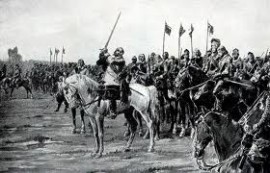
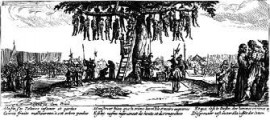
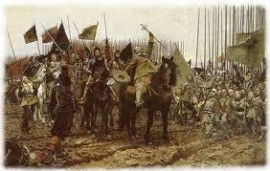
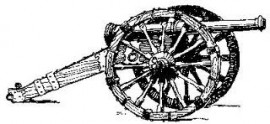
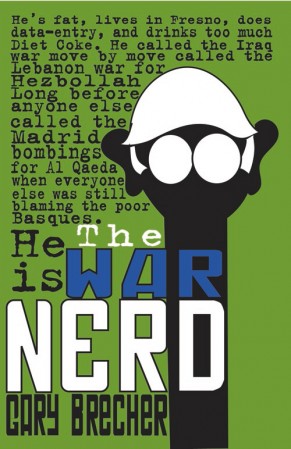


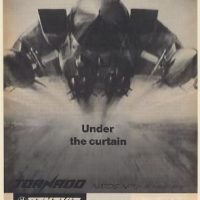







69 Comments
Add your own1. Korman643 | April 22nd, 2011 at 9:59 am
“Stuff like this is why I have to laugh when Dixie whiners complain about Sherman. If only they knew what the real rough stuff is like, they’d have his picture in a little shrine as Kwan-Yin Sherman, God of Mercy.”
Ladies and gentleman – the War Nerds presents “The Truth”, with capital T. Not much people does this while writing these days.
2. Mac | April 22nd, 2011 at 10:15 am
So, we’ve evolved from zombies on the battlefield to zombies in the office. That’s just great.
3. abc123 | April 22nd, 2011 at 10:21 am
Awesome article.
4. Machinegunner | April 22nd, 2011 at 10:27 am
Hate to brake it to you Breacher but those leather and copper cannon proved worthless. Gustav the second Adolf tried using them in Poland. Great idea, it just didn’t work. It had this odd tendency to explode.
He didn’t bring any to Germany. Although he did bring the worlds best artillery corps.
5. MF | April 22nd, 2011 at 10:31 am
This is my favorite kind of war nerd article.
6. burp | April 22nd, 2011 at 10:39 am
I believe the poem is called “Tränen des Vaterlandes”
Wir sind doch nunmehr ganz, ja mehr denn ganz verheeret!
Der frecher Völker Schar, die rasende Posaun,
Das vom Blut fette Schwert, die donnernde Karthaun
Hat aller Schweiß und Fleiß und Vorrat aufgezehret.
Die Türme stehn in Glut, die Kirch ist umgekehret,
Das Rathaus liegt im Graus, die Starken sind zerhaun,
Die Jungfraun sind geschänd’t, und wo wir hin nur schaun,
Ist Feuer, Pest und Tod, der Herz und Geist durchfähret.
Hier durch die Schanz und Stadt rinnt allzeit frisches Blut.
Dreimal sind’s schon sechs Jahr, als unsrer Ströme Flut,
Von Leichen fast verstopft, sich langsam fortgedrungen.
Doch schweig’ ich noch von dem, was ärger als der Tod,
Was grimmer denn die Pest und Glut und Hungersnot:
Daß auch der Seelen Schatz so vielen abgezwungen.
Tears of the Fatherland
Full now—yea, more than full–behold our devastation:
The frantic drum beat, and the brazen horde,
The thundering siege gun, and the blood-slick sword
Devour all diligence, and sweat, and careful preparation.
The church is overthrown; our mighty men are slain;
The town hall lies in dust; our towers burn;
Virgins are raped; and everywhere we turn
Are fire, plague, and death to pierce us—heart and brain.
Down walls and through the town runs always fresh-spilled blood
For eighteen summers now, our river’s yearly flood
Near-choked with corpses, has pushed slowly, slowly on
But nothing will I say of one thing—worse, I know,
Than death, more grim than plague, or fire, or hunger’s woe:
Those pillaged souls from whom even hope of heaven is gone.
7. MrTulip | April 22nd, 2011 at 10:48 am
“For three years running the river has been dammed with corpses.”
it’s a pretty butchered line from andreas gryphius’ “Tränen des Vaterlandes” (tears of the fatherland), one of the most famous poems of the german sprachraum.
google reveals several translations. i like this one:
“for eighteen summers now, our rivers’ yearly flood
near-choked with corpses, has pushed slowly, slowly on.”
8. Tall Saul | April 22nd, 2011 at 10:48 am
Well I still suspect the leather and metal cannons were better than the wooden cannons the hungarians came up with.
And my favorite kind of article too. I think the Swedes/Lutherans of this period were like the mongols; they got all of their history in within a few centuries and have been living in retirement ever since.
9. Ezra Dunhill | April 22nd, 2011 at 11:12 am
Wonderful article today! Agreed with #5, these tours through history are my favorite War Nerd articles.
10. PJ | April 22nd, 2011 at 11:21 am
“Bet Kind bet, morgen kommt der Schwed”
“Pray, child, pray– tomoroow comes the Swede”
“The Last Valley” is a pretty good movie set in Germany during the Thirty Years’ War, stars Micheal Caine and Omar Sharif.
Excellent article Gary!
11. Anonymous | April 22nd, 2011 at 11:49 am
The novel 1632 goes into great detail on the cruelty of the era’s aristocracy and mercenary ‘military’, as well as the Battle of Breitenfeld itself.
12. wengler | April 22nd, 2011 at 12:09 pm
I always cue people in on this war when they think the Muslims are the only ones that are/were crazy fanatics. You put irrational belief into cultures whose entire power-structure exists to massacre and kill, and you get some really ugly things happening.
Also good point about the makeup of 17th century armies. Those generals treated their rabble with total and complete disdain. Another reason why France’s revolutionary armies would cut through Europe like hot butter 150 years later.
13. sst | April 22nd, 2011 at 12:17 pm
I like how Gryphius’s sonnet ends with – death and plague and famine is okay, but far worse are the forced conversions!
Btw he says three times six; eighteen loses the connotation @number of the beast.
14. KA74 | April 22nd, 2011 at 12:49 pm
Note: All I know about Thirty Years War I learned from Wilson’s “Europe’s Tragedy”, so its errors are my errors also.
Anyway, Brecher exaggerates to some degree. Some areas (like Brandenburg, the heart of Prussia-to-be, or Bohemia where the war began in the first place) were hit horrendously, but many areas in HRE actually grew their population during the period. It’s impossible to say for sure, but pretty safe to assume that most of those ‘gains’ were refugees counted as ‘losses’ in other provinces.
The war was also a total scumfair and a festival of cruelty, but it wasn’t worse than Liberia. It was Liberia, pretty much. And while there were plenty of sick fucks in every army who committed atrocities for the giggles, for the most part the soldiers did what they did for food and loot. An army “living off the land” is really bad news for civilians, and in 30 Years War, armies both moved around a lot, and didn’t really have any logistics organization worth mentioning. Soldiers want to eat, peasants want to hoard their food so they get to eat in winter = Swedish Drink et cetera.
Lastly, the war wasn’t really typical for its era. It was maybe the first remotely modern war in the sense that its atrocities were news. During English Civil War that followed, most commanders deliberately made it clear that they didn’t want that kind of brutality here. And, as the horrors were newsworthy, they were undoubtedly exaggerated and even made up.
All in all, an extremely nasty war in par with Eastern Congo, but the idea of “All-Destructive Fury”, as some chronicles put it, went overboard.
15. Don Quixote | April 22nd, 2011 at 1:40 pm
We gave it back to them at Nordlingen
16. Gabriel | April 22nd, 2011 at 1:41 pm
Love this one. Living in Germany this really speaks to my sense of history. The thirty year war is really important to many subtle underlying aspects. For example I’m currently in northern Hesse (the part where the poor Rev. War mercenary SOBs hailed from) Here, and all over most of the parts of Germany where the Swedes ravaged, you don’t only find a place called “Schwedenschanze” (a place to hide out from the Swedes) somewhere in the woods outside the village, but the whole geography is determined by the 30 year war marauders: You very rarely find isolated houses. In most civilized places of the world farmers settle close to their fields, in all parts of Germany except the north people always live in densely clustered villages of a certain size. Not sure how much it helped, but definitely better than being at the utter mercy of small bands of twisted mercenaries ready to swoop in for days to rape your kids, eat your food and shit in your mouth.
17. DrunktankDan | April 22nd, 2011 at 1:45 pm
As someone with numerous Swedish relatives I can verily report that they still are total unemotive fucking zombies. The only time you get a rise out of their boomer generation is after copious amounts of wodka. The younger Swedes are a bit better (or worse, depending on your point of view) but still miles behind the Americans they have to hang out with when they come visit.
18. mario_croatia | April 22nd, 2011 at 2:51 pm
Since I’m a Croat I’ll add something interesting that none of you probably heard of. A cathedral in Magdeburg (allegedly) has inscription on it and it says “Gott beschütze uns vor der Pest dem Hunger und den Kroaten” -God Save us from the Plague, Hunger and the Croats. That’s because Tilly’s elite light cavalry units were Croats battle hardened in two century long irregular war against the Turks. They knew thing or two about the psyops, and didn’t have Geneva convention to bother them. They dressed like Turks and yelled Allahu Akbar when they charged on poor northern Europeans that newer saw a Muslim in their lives (BTW Croats are Catholics, and Croat Calvary was filled with 25 percent Croatian Serbs, who are Orthodox). Also, they wore coloured uniforms styled after those of the Ottoman warriors they fought before. They also wore coloured scarves around their necks (hence Cravat, or tie, as you call it). What “distinguished” them was the fact they were butchers and looters who knew what effect a good massacre has on the future battles – sometimes people surrendered on condition that Croats don’t enter their cities, especially a century later during the War of Austrian Succession, when Croatian Pandur’s burned a city or two just to make a point. But, back to the war we are discussing – here’s a quote from Friedrich Schiller’s – History of the Thirty Years War:
“Croatians laughed as they cast little children into the midst of flames. The tortures and horrors perpetrated in Magdeburg were so shocking that several imperial officers sought Tilly to put an end to them. He replied: “I’ve promised three days for pillaging and slaying. The soldiers must have some amusement after so many fatigues!”
It is also interesting that Croats were accustomed to chopping noses and ears of their enemies to have a proof of “a kill” (also a Turkish custom of the time), and poor protestants misunderstood that and believed that they were cannibals.
I think I’d be more scared to fight those lunatics than some mute Swedes. Especially if I was unarmed civilian, hahaha….
19. Max Sjöblom | April 22nd, 2011 at 3:04 pm
Did my army service in the Swedish cavalry. Yes, we still have horses. On the anniversary day we all rode around and saluted the regimental victiry banner and all that, and the colonel spoke about Breitenfeld before we marched off to church to pray for victory or something. Can’t say I liked it. Point is, we’re still celebrating those atrocities.
20. Moriartillery | April 22nd, 2011 at 3:37 pm
Gustavus Adolphus is one of my all-time favorite leaders. He reformed the entire order of battle and battlefield doctrine – not just with the mobile artillery mentioned in the article, but also by e.g. inserting combat engineering into its proper role in the combined arms structure.
But one of his most underrated achievements was to (briefly) make the Swedish army into an actual meritocracy – it wouldn’t have been nearly as successful in the Thirty Years’ War without the promotion of people like Torstensson, the artillery commander.
21. ovaut | April 22nd, 2011 at 3:48 pm
Dolan Dolan Dolan. YOU DID A BOOK OF POETRY.
Don’t be shy.
22. Eren | April 22nd, 2011 at 3:53 pm
God, I wish you would do a piece like this on one of the Turkish battles. It can even be Vienna or Lepanto for all I care. I feel like you owe it to us because you got our history wrong when you wrote about it on the old exile website. Something about the Seljuks having conquered Constantinople. That’s to be expected from your average Western historian, but you, Brecher …
Even if you decide not to write a piece on us, know that it’s these nostalgic articles on old battles that really draw us to your blog. Modern warfare sucks.
23. Hanko | April 22nd, 2011 at 3:54 pm
If you are interested inte the thirty years war from the Swedish point of view I would recommend you to read Peter Englunds “Years of war (ofredsår)” unfortunately it hasn’t been translated to english. But it is really good and he doesn’t only focus on the battles and the campaigns but also how the people viewed the world, the evolution of the modern state and a lot of other things. Of course it is centered on the Sweden, for example the battle of Nördlingen is not covered very well (a combine army that included Swedish troops included got their ass kicked) but the sacking of Prague 1648 is covered in detail (Swedish museums are still benefiting from the loot stolen then).
The Swedish religious fanatism got even worse later on with Charles the XII troops, they charged into the enemy with the attitude that if you got killed it was meant to be, they were excellent shock troops (to a certain point).
24. Sippa | April 22nd, 2011 at 4:32 pm
Hakkaa päälle pohjan poika!
25. Michal | April 22nd, 2011 at 5:03 pm
Why is every picture on Exiled linking to exact same tiny version of exactly the same picture? Makes no sense, why not just link it to a bigger one? I’d really like to check out “Looka them killers on their knees!” but I can’t look at it, all I see are little stains, and it doesn’t change when I open the link.
26. Michal | April 22nd, 2011 at 5:04 pm
PS: Although otherwise I have praise War Nerd, this is some great reading, and I’m not even halfway through as I type this.
27. Sven Svensson | April 22nd, 2011 at 5:26 pm
Swedish apologetics and do-gooders here, you sicken me.
28. Bester | April 22nd, 2011 at 5:45 pm
The Russians made a neat video about Qaddafi and US involvement. With English subtitles.
http://www.youtube.com/watch?v=9i50hjbp3W4
29. Duarte Guerreiro | April 22nd, 2011 at 7:33 pm
@16
“(…) definitely better than being at the utter mercy of small bands of twisted mercenaries ready to swoop in for days to rape your kids, eat your food and shit in your mouth.”
Faaaaantastic. Here is a sentence that just walks up to you and kicks you in the crotch.
30. Soj | April 22nd, 2011 at 8:17 pm
Mythbusters have built a few of those goofy cannons, including the leather one and the Hungarian tree (all wooden) cannon.
31. allen | April 22nd, 2011 at 8:24 pm
@22
Vienna, for all the Euros pump themselves up about it, was kind of lame.
It was not so much European heroism as logistical foul ups messed up Suleiman the Magnificent’s plans … too far to go, didn’t count on the mud. They had to leave most of their most heavy cannons behind.
After Suleiman, the Empire had a run of weak (even crazy) Sultans, and effectively it was run by prominent slaves and women in the Harem for a century. So return trips were kind of unlikely, especially logistically onerous ones to add new European satellites to an already bloated and rebellious empire.
And that’s all the Ottoman’s wanted to do with Vienna — add it to the “big shading tree” of the Empire. They didn’t care so much about Christianity. Christian civilization to them was identical with Constantinople (dealt with); everyone else in Europe to them were insignificant backwater dwellers … and who cares about Christians when the Shi’ites are rebelling every five minutes anyway?
(Europe would eventually give them reason to think otherwise of course.)
32. the grogen | April 22nd, 2011 at 8:27 pm
Nice article. I’d be interested in hearing about the armies of Sargon the great. I’ve been told they were the first true armies with a general staff and a command structure.
33. allen | April 22nd, 2011 at 8:35 pm
… Distracted by comments. Gotta cut out rambling about history habit.
This was another Fantastic article, WN
34. Dr. Luny | April 22nd, 2011 at 8:43 pm
One of the big reasons for the massive depopulation is that logistics of the time basically consisted of pillaging the surrounding countryside as you marched, which made the already precarious nutritional situation of the average German peasant in the areas armies-friendly or enemy-marched through much worse.
Another battle to look at might be the Schlacht bei Freiburg, in which the Bavarians slaughtered the French, who insisted on attacking dug in positions on top of hills after a forced march straight from Paris. The population of the city mostly starved to death even though there was no seige, the armies decided to fight outside of the city, and both armies left before they could properly pillage much beyond the food and fodder needed for their armies.
35. Dan | April 22nd, 2011 at 8:58 pm
Just saw a great war movie which might be interesting even to the WN: called The Red and the White, a Hungarian film about the Russian Civil War, made in 1968.
36. helplesscase | April 22nd, 2011 at 9:56 pm
Your articles this week have all been excellent, and this is probably the best one yet. War Nerd daily blog is the best thing to happen to the internet.
37. Bullet | April 23rd, 2011 at 1:10 am
Thanx Brecher- for telling us what real “medieval siege conditions” look like- Misrata has a long way to go.
On my limited knowledge I think you sell 17th Century cannon short. I saw some gonzo history program on 15th century cannon, and those guns looked kind of effective. A cannon ball could cleave through three or four men, no matter what armor they were wearing, at 400 meters. Not bad- must’ve been hell on moral-
38. Nick | April 23rd, 2011 at 1:12 am
great article, thank you War Nerd!
Your comment about those bloody Bergman films is spot on. This hour-long black and white torture should be prohibited under the geneva convention.
39. John Figler | April 23rd, 2011 at 3:13 am
Good.
Anyway, check your facts about tactics. The swordsmen from the Tercios had been droped long ago by the time of Breitenfeld. It was a Pike and Shot formation, with the shot part evolving towards flexible formations to take advantage of terrain and increase firepower.
Gustav-A was more of a propagator than an innovator. It has always amazed me how everybody is always ready to give him credit for what another very tough Protestant SOB in fact did. The Dutch had been hard at figuring out how to beat the Tercio for half a Century by the time of the Thirty Years, and they had come out with a few good ideas. Nassau’s tactics were all about increasing firepower to beat the massed Tercios, and Gustav took them straight from the book. The use of cavalry was all his own, that’s true, though, as his willingness to give his men maps, field glasses and uniforms, but I guess that’s just being Swedish.
Of course the Spaniards were hard at it also, by the time an actual Spanish Army met a, quite creased, Swedish Army at Nordlingen the Nassau formula as played by IKEA was beaten. In Holland too, it was money and sheer exhaustion what defeated the Spaniards more than mere tactical twilight.
About a soldier’s life back then there is a good book called Vida de Estebanillo Gonzalez
One of the most funny parts is when it tells how was a pay day in winter quarters during the Thirty Years War. As the colonels of each regiment in both armies had to show warm bodies to the paymaster of the army to prove that their payrolls were correct, they enlisted for a day the soldiers of neighboring enemy units to fill up their ranks. They got the payment for a full regiment, then gave each temporary soldier a small sum and the next day, when the paymaster of the enemy regiment appeared one’s own soldiers went there to repeat the ruse, so everybody got a pay plus an extra, and the corrupt colonels their share.
It seems it was even translated to English, probably there is a copy online somewhere.
http://en.wikipedia.org/wiki/Estebanillo_Gonz%C3%A1lez
Overall, enjoyable Saturday morning read. Thanks.
40. Ivan | April 23rd, 2011 at 4:40 am
Now you’re talking Brecher!
41. Kahlenberg | April 23rd, 2011 at 4:45 am
Using light artillery to crush infantry was originally the intuition of
Emanuele Filiberto of Savoy( see Battle of San Quentin, 1557). He was
the commander-in-chief of the Caesarean (Imperial) Army in Flanders, so
it sounds strange to me (well, not that strange actually) that other
Imperial commanders didn’t know such a kind of tactics.
Second: it’s a bit of a (disturbing, to be honest) cliche to imagine
Spaniards yelling and spitting or dancing flamenco while fighting.
Since the appearance of Swiss Infantry into European’s warfare world
SILENCE was the behaving task to carry on all along while fighting. No
shouting, no helping the wounded, just fill the gap as your companion
fell. There was death penalty for anyone breaking this rule and most of
European pickets regiments used to act like that.
Third: the Swedish army at Poltava broke and run, leaving 10000 dead
and 16000 captured by the Russians after a long pursuit: perhaps
Eizenstein was on his way to make movies.
42. dr kaposi | April 23rd, 2011 at 4:51 am
i mean this isn’t perhaps the best place to say this but i gotta say I never understood why wars were so interesting and fun for some people.
i mean i’m not a peacenik or something, i just don’t find them (wars) amusing at all. they just disgust me. not morally, physically.
43. Dutchnerd | April 23rd, 2011 at 7:05 am
I really have to quote one of the lousier SF-series here :
“When it comes to down right nastiness, nobody beats us humans”
44. Ilona | April 23rd, 2011 at 8:05 am
Swedes fought gloriously to their last Finn.
A prayer in Roman Catholic churches in Germany during the Thirty Years’ War mentions the Hakkapeliittas – Finnish light cavalrymen:
“A horribile Haccapaelitorum agmine libera nos, Domine”.
(“O Lord, deliver us from the terrible army of the Hakkapeliittas”)
45. fnord | April 23rd, 2011 at 12:23 pm
Too freaking funny, I was reading up on it just two days ago. Im Norwegian, so the Swedes have always been our coked-up cousins.
With regards to the zombie-infantry, you have to remember thta those were mostly finns. And then it all makes sense.
46. fnord | April 23rd, 2011 at 12:29 pm
31: Not to be anti-muslim, but you have to give the poles the glory of Vienna, surely? That was a army.
47. Frits | April 23rd, 2011 at 12:56 pm
Really enjoyed this one WN cheers!
48. Snapper Lapper | April 23rd, 2011 at 11:28 pm
@6: Hey, Burp, can we have another go at “virgins are raped?” Gotta carry it around on the old Crusader banner while looking for the fabled SoCal Virgin of the 405.
49. Mohammed Akbar Khan | April 23rd, 2011 at 11:48 pm
WN might want to check out the captain’s log on Dr. Billy Brydon and Jimmy Souter, the (almost) sole survivors of Elphinstone’s 1842 retreat from Kabul. 4,500 troopers of the Brit 44th, plus 12,000 whores from Acuña’s Boyz Town couldn’t seem to make the 30-mi hike through Gandamak Pass.
“Do not piss off me or Allah! There will be certain disapprobations.” – Mohammed Akbar Khan to former al-Jazeera anchor anchorwoman Joumana Nammour.
The Afghan ‘jezail’ might not have enjoyed the cyclic rate of the General Electric GAU-8/A “Avenger” . . . but it did OK for its time.
50. tigerhan | April 24th, 2011 at 1:13 am
Excellent article!!!!
the piece on Ingmar Berman…and the resignation of the Swedes…WN at his best!
51. UNTRUE FINN | April 24th, 2011 at 1:21 am
Awwww brecher, no mention of the Finnish troops that participated, the glorious HAKKAPELIITAT? The King remarked affectionally that he could make out the HAKKAPELIITAT among his men by their stink. The Germans did forgive us for our warcrimes thogh and teid to ‘help’ us out against the Soiviet during WW II but that didn’t go quite according to the plan. At the end of the mess the beaten Finns were forced by the victorioius soviets to kick out the loser Germans who didn’t appreciate that and thus burned down the whole of Lapland whilst exiting.
52. Lord Marshall | April 24th, 2011 at 4:29 am
If you fall here, now, you’ll never rise. But if you choose another way, the Necromonger way…
53. Lurker | April 24th, 2011 at 6:05 am
Two points I’d like to note. The Swedes were not unusual only for their tactics. They had also a very unusual pay-structure: most of the domestic troops were actually draftees, with very little pay. Of course, there were also ample numbers of mercenaries from Scotland and other countries, but the core of the Swedish army was formed out of drafted peasants.
The other point I’d like to note: Swedes did have a very good logistics organization, for that time. They actually made rolls on the villages and farmhouses of the occupied area and plundered everything quite methodically. This is much more efficient than simply robbing things. (In the early 16th century, Sweden already had the most developed bureacracy of the Western world. The Prussians learned that from the Swedes.)
54. myffie | April 24th, 2011 at 8:51 pm
This is the most fun war nerd article in a while. And the comments are really good too. I’m having a good time!
55. Ad | April 25th, 2011 at 3:29 am
#41
So they broke and ran leaving more troops dead or captured than the amount actually present at the battle? Seems very likely.
56. Trevor | April 25th, 2011 at 6:26 am
It is damn good to see the Thirty Years War getting propper attention. There were alot of firsts and lasts in this war — first mass use of firearms, last major religious war in western Europe — but you hardly ever hear about it! And it’s particularly relevant now because this also marked the transition from mercenaries to standing armies in the late 17th to early 18th centuries — something that’s going in reverse these days.
57. Korman643 | April 25th, 2011 at 7:22 am
#55 Ad:
Kahlenberg’s basically right with those numbers.
Charles of Sweden had 24000 people fighting at Poltava (this includes Mazeppa’s cossacks) + an indefinite number in the rear. 9000 got killed in battle, and 3000 got captured immediately. Another 12000 (including a part of the Swedish Army who had not fought the actual battle) got captured when the Russian went in pursuit. The Swedish army collapsed in its entirety and was totally annihilated.
The Russians lost only 1300 soldiers, quite a bargain.
58. Korman643 | April 25th, 2011 at 8:00 am
Few additional comments here and there:
First – I believe that more than for Ingmar Bergman, Sweden must be remembered and thanked for this
http://www.youtube.com/watch?v=QziPUfPbE28
one of today’s music last few lines of defence against irrelevancy
(and I believe that the 30 Years War mercenaries connection makes more sense here)
Then:
@14 KA74: The WN is right when he says that Liberia is a joke compared to 30YW. It’s very difficult to convey the scale of that “thing”, but just think about this – in Liberia technically you may jump on a low cost flight and (technically) get the fuck outta there – it’s a regional crisis after all. The 30 Years War was a continental catastrophe on every account – political, miltary, economical, medical and even climatological. It was literally like Mad Max II but with more atrocities, the plague and shitty climate on the top of that. And lasted almost 40 years (combat didn’t subside after Westphalia of course), which means basically two generation one after the other, considering the lifespan in continental Europe during XVII century. Everyone talks about the Black Plague in XIV century, but that was short (three years in Europe), and basically the result of a huge Malthusian crisis, which left the survivors with 10 times the food and resources they had before. After the Swedish campaign, Central Europe looked like Mars after a tsunami. The psychological thrauma was sooooo huge that even aristocracy and politicians began to notice, and the conduct of war after Rocroi changed immensely – if you check wars like Grand Alliance, Spanish or Austrian Succession etc, the battles and sieges were immensely bloody, but the amount of ass raping of local resouces fell considerably.
Other sign that it was a BIG war – it secularized continental Europe for a long time after two centuries of religious based conflicts.
#18. mario_croatia: Agreed. Crotian troops had a fearsome reputation that got on at least until the mid-XVIII century. Croatians got used for instance during the siege of Verrua Savoia in 1705 (War of the Spanish Succession) and very rapidly got such a fierce name among allied and foes (in this case the French) that even Vittorio Amedeo II (who was not exactly a peace-nik) apparently felt they had crossed some serious atrocity threshold. BTW it appears they used to castrate their prisoners quite regularly.
59. Padilla | April 25th, 2011 at 4:46 pm
18
Croatians… Little cowardly mercenaries, but very brave at butchering unarmed civilians.
Nothing new here… Euromorons at their worst (Balkan-style, and this is saying plenty.)
60. Kahlenberg | April 26th, 2011 at 1:12 am
#55 Ad. I have checked more carefully: according to Englund and al. casualties and size of the opposing armies are more or less as Korman643 reports. Thanx to you both and sorry for the inaccuracies.
61. John | April 27th, 2011 at 11:55 pm
When is the War Nerd going to publish his second book? And third? 🙂 Your columns are an essential part of my knowledge of world history.
62. Carpenter | May 12th, 2011 at 10:18 am
A few things to add:
(1) No Swedes watch Ingmar Bergman. He is just someone the Marxists in universities love because he made state-funded movies that were Nothing Like Hollywood And Therefore More Real And Better. Don’t think that has anything to do with normal people in Sweden. Everybody hates that guy.
(2) Gustavus Adolphus was the fancy Latinized name they used in foreign books. The king’s real name was Gustaf II Adolf. Yep, Adolf was a common Swedish name, among kings as well. Not too politically correct to mention in an un-demonized way these days.
(3) The Spaniards planned to build a military port in the Baltic Sea, as part of their plan to crush Protestantism once and for all. Good thing the Swedish army came along and took hundreds of German cities from the Catholic invaders, because Catholicism is as batshit crazy as the Judaism is comes from. More relaxed, less bombastic, less centrally-controlled Protestantism suits the North European temperament better.
(4) The Swedish army received funding from France. Although the French were so-so Catholic, and therefore couldn’t openly fight on the North’s side, they had no love for the Spanish Empire and didn’t wish to be surrounded by the Spaniards.
63. Carpenter | May 12th, 2011 at 10:40 am
DrunkDan says: “As someone with numerous Swedish relatives I can verily report that they still are total unemotive fucking zombies.” –Complete bullshit. I’m a Swede myself, and I recognize typical ignorant bullshit when I see it. I suppose all Americans walk around in cowboy hats with six-shooters in their belts, wheezing like Clint Eastwood? And all Russians are communists, all Germans are evil Nazis, all Japanese are fanatic samurais and geishas, and all French are ridiculous and wear black berets? My, how the dumbasses mouth off.
64. Heiku | June 9th, 2011 at 7:55 am
Carpenter: Maybe if you want your own comeback you should try and wipe it off your mothers chin. Pointing out the fact that Dan was generalizing is not very effective.
65. DrunktankDan | August 13th, 2011 at 10:27 pm
@63
Wasn’t expecting to get flamed for speakin’ the truth, bud. Certainly didn’t base my assessment off of nothing. I go to Stockholm every summer, and it feels like I am in a city full of robots, until the boozing starts kicking in.
You don’t earn cultural reputations for nothing. Settle down. It’s not like Americans don’t have to hear it constantly. If the worst shit people can say about you is that you are boring, count yourself lucky. The list of American stereotypes is pretty long, and we don’t have our dicks shrivel up and our faces contort with rage every time we hear ’em.
Also, you are a faggot (this is the internet right?)
66. DrunktankDan | August 15th, 2011 at 12:13 am
Bah, there wasn’t any point in responding to that squarehead. I had no idea he was talking shit 50 comments later. Only ran across it today while rereading the WN. I really missed an opportunity to embarrass the holy shit out of an thinskinned little wiener. Anyways,
O HOLY AND DIVINE COMMENT MODERATOR
I BEG OF THEE AN ANSWER TO A RIDDLE
A PLAGUE UPON EXHOLES LOADED ENOUGH TO COMMENT
ANSWER ME THIS
AND I WILL FORSAKE ALL OTHER DEITIES
Do you guys email people if there is a response to their comments? Cause, uh, that could really add some hilarity to the comments section if gentle folk like me knew they were getting crap. A lot of sites use the ‘respond’ button to facilitate ‘civil’ ‘debate’. Then again, HOLY LORD, you probably don’t feel like turning into 4chan.
Cheers.
Also, I subscribed. Can y’all get rid of the damn donate pop up for subscribers?
67. Robinson | September 29th, 2011 at 5:12 pm
Please teach the rest of these ineretnt hooligans how to write and research!
68. Hob Nob | August 29th, 2012 at 2:57 pm
As others have already mentioned, the “Swedes” Brecher is talking about were in fact Finns. When Gustaf II Adolf died, at the battle of Lützen, the Finns were fighting the Croatians, but it was recorded as Swedes against Germans.
Much later, in WW2, a nominally German general, but of Croatian origin, burned down an entire town in Finland. A sort of “we meet again”.
69. Serafin Olarte | July 21st, 2017 at 3:59 pm
Great stuff, just one point: the tercio originally consisted of pikemen, musketmen (Harquebuses really) and crossbowmen. As the formation evolved in the sixteenth century and long before the 30 years war, the crossbow was abandoned but, as often happens in military terminology, they kept the tercio title long after it was just a duo of pike and gunpowder.
Leave a Comment
(Open to all. Comments can and will be censored at whim and without warning.)
Subscribe to the comments via RSS Feed